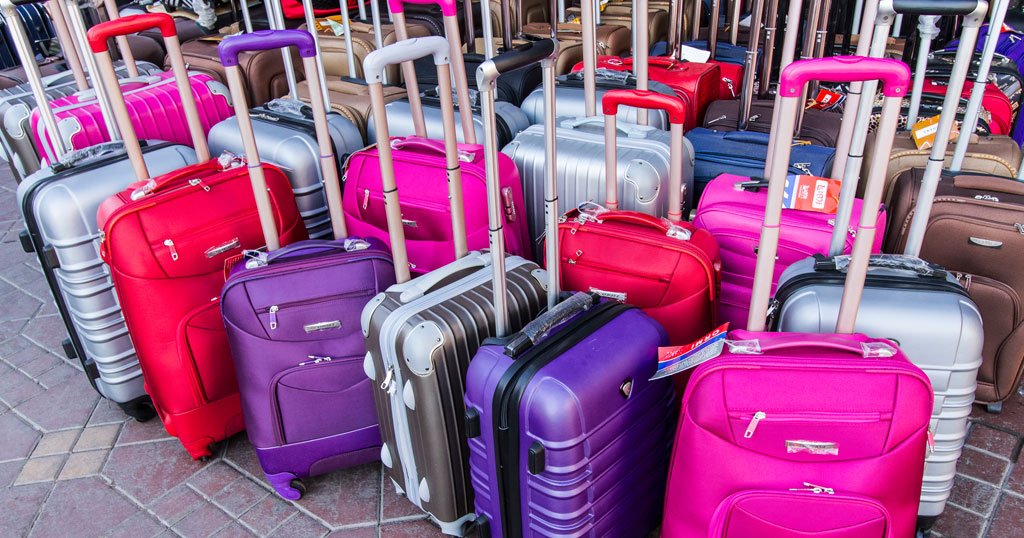Packing for your move abroad
In my first two posts in this series I gave you advice on how to cope emotionally with moving overseas, and things to consider when researching your post. In this post I’ll give you some packing tips.
These aren’t your typical moving tips on how to properly pack your belongings. Normally when you move overseas, a moving company will come in and pack your things, and they want to do the actual packing so they aren’t liable for something breaking that you packed incorrectly.
What I’m going to tell you about packing for an international move is more a matter of prioritizing each and every thing you own, and how long you can live without it before it arrives at your destination.
How long can you live without most of your belongings?
Transporting your household effects can take 3 to 4 months. They have to go overland or by sea (or both), and must clear customs. So when packing, you have to be realistic about how long you can be without most of your belongings.
The good news is you often get an air shipment of a few hundred pounds that will arrive in about a month.
Don’t listen to them when they promise it will be there in a week. Plan for four weeks and then be pleasantly surprised when it arrives in three. But don’t be too aggravated if it takes six or even eight, because that happens too.
Here’s what to pack, and where:
On the plane
Carry on bags
Check your airline and see what your limit is. Some airlines allow a rolling carry on and a second smaller item like a laptop case or a lady’s handbag. Some allow only one small bag. Make sure you know the limit for each airline for your entire journey, so you don’t risk having your larger carry on bag taken away from you and checked as luggage.
Things to pack in your carry on bag:
- Important documents such as birth certificates, marriage certificates, vaccine records, medical records (or at least medical summaries), school records, etc. Scan these documents before you leave and email them to yourself in case they get lost.
- Any important files or papers like insurance policies etc.
- Important jewelery and other valuables.
- Your laptop, camera, phone and other devices, with chargers and adapters.
- Your passports and ticket information. Make sure the packers don’t box this up! I like to put my carry on bags in the car the night before the movers arrive.
- Medicines and prescriptions, glasses/ contacts.
- Your planner, of course! And your address book too.
- Wallet and anything else you need to keep with you during your journey.
Luggage
This is stuff you’ll need right away, but can live without if your luggage gets lost. Keep in mind that although most airlines are very reliable these days, sometimes luggage is lost forever. So don’t put anything precious in your luggage.
Check your weight limit with your airline. Most airlines allow only one checked bag, so make sure you are within your limits or be prepared to pay overage.
If you are moving to a place that’s having different weather from your departure location, you’ll need to think about different clothes, shoes and gear than you’re currently using. When I lived in Moscow I sponsored a family who was moving there from a warm climate. They were due to arrive in September, and in an email before they arrived I reminded them to put their winter coats and clothes in their luggage because they would need them right away. They arrived in sandals and short sleeves and had shipped all their winter gear in their sea shipment, which wouldn’t arrive for 3 months yet. It snowed a week later. Think ahead.
Things to pack in your luggage:
- Clothes and shoes appropriate for the weather when you arrive, especially if you are moving to a different climate from where you’re currently living.
- Toys and books for the kids, because they will be missing their stuff.
- Kids’ school items like backpacks, lunch boxes, musical instruments etc.
- Scissors. You can’t put this in your carry on bag, obviously, but you’ll need scissors for opening all your boxes when they arrive.
- Anything else you’ll need immediately.
Air shipment AKA Unaccompanied air freight
These are things you’ll need in the first month in your new place. Think of what the season will be, and what your new home will be supplied with or not.
Things to pack in your air shipment:
- If your new place will not be supplied with kitchen items like pots and dishes you’ll want to pack these in your air freight. Non-breakable items only though, because air shipment boxes tend to get thrown around.
- Check with your shipper if you are allowed to ship your scanner/ printer, because that is a handy thing to have right away.
- I like to put a few rugs into the air shipment because they aren’t breakable and they make a new place seem more like home right away.
- Kids’ bikes, toys and sports equipment because they will want their stuff.
- Bedding, pillows and towels.
- Laundry baskets are very handy to have.
- More clothes and shoes, especially if the season will be changing.
- Anything else you’ll need soon.
The rest of your stuff will go in your household effects shipment, ie on the ship.
Before the packers arrive I recommend separating out framed photos and wall hangings so they can be packed separately from other things. Also, remove everything from your bookshelves that’s not a book. You don’t want your knick-knacks boxed with your books. And, return items to the rooms they should be in. Make sure all the kitchen items are in the kitchen, office items in the office, etc. Boxes will be labeled with the room they are from so it will be easier to sort items that way.
Some other tips for pack-out:
Pack your carry on bags and luggage before the packers arrive, to make sure everything fits in the luggage. When we moved from Moscow, there were things around the house that I thought would fit into the luggage. We so overestimated our luggage capacity, we had to ship 6 boxes to ourselves! We don’t make that mistake any more.
Packers can’t read your mind, so if you don’t want something packed make sure to mark it very clearly! If in doubt, they’ll pack it up. I’ve heard of crazy things being packed like the garbage in the garbage can and the roast out of the oven. Usually they have more common sense, but they don’t want to be held liable for anything left behind.
I recommend putting your luggage in the car or in a very clearly marked No Pack area. Also, make sure to separate out and clearly mark the items that should go in your air shipment so they don’t get packed with your sea shipment.
Make sure to pull out hidden items so they don’t get left behind. One time the packers didn’t realize there was a drawer under the oven so the cookie trays and muffin tins didn’t get packed.
With many thanks to Laurie for giving me permission to use this via Plannerisms: Moving Internationally Part 3: Packing.
How to organise your packing to help make your move abroad a success from the start

Sort out your packing! PDF Link
Find the Kindle version on Amazon




Hi, I was wondering if there are boxes you’d recommend for taking on the flight we are all taking. We are happy to pay excess baggage if we need to. My children have bulky toys that won’t fit in their clothing luggage but they need them to come with us if we can and not be arriving a month or two later. Should I just buy extra suite cases or are there boxes/packing the airline may provide in advance or that you recommend we buy?
Hi Rebecca,
I’ve never bought boxes especially for the airline, so I’ve no recommendations. I doubt airlines sell boxes, but perhaps your removal company would have suggestions.
Old fashioned wooden ‘tea chests’ are great as they’re a portable size and the solid sides provide protection. Otherwise, general, very solid cardboard boxes are fine, as are suitcases. Soft suitcases fit more than hard sided ones. If the toys are soft, you could vacuum pack them to save some space.
Good luck with your move!
Carole
I am trying to help family members egarding their daunting task of moving abroad and found your article very useful and the way you broke it down into main points will definitely help them. A very good point that people don’t realize until it happens is that you will always underestimate how much stuff you own, a good purge may reduce how much you will end up shipping.
any thoughts on the safest way to move our silver flatware? On the cargotainer or in our luggage?
Hmm, tricky!
I guess that’s quite bulky, so it may not be too easy to carry. You could either pack it yourself – don’t mark the box ‘family silver’ 😀 – and let it go by container, or just let it be packed by the packers. It depends how valuable it is, both monetary and sentimental. If the former, then you need to make sure the value is properly insured; if the latter, that’s a judgement call for you.
I’ve shipped sentimental and valuable items via container – so far so good, but it makes me very anxious when I’m unpacking them as they’re fragile. But I can’t carry them because they’re too heavy.
I’d rather ship than use air freight for those, though.
Thank you for the advice. This is helpful.
There is so much work that goes into just moving, let alone moving internationally. I like your advice to plan on it taking four weeks then be pleasantly surprised when it arrives in three. I have always been overwhelmed when thinking about all the work that goes into moving internationally. I usually decide that if I ever needed to, I would try to sell many of my belongings so that I can buy new stuff when I get to my destination. You make me feel like that isn’t completely necessary.